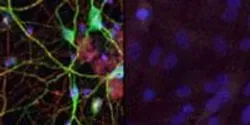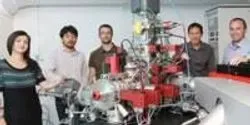Cells

Scientists at the University of Cambridge working with the Weizmann Institute have created primordial germ cells – cells that will go on to become egg and sperm – using human embryonic stem cells. Although this had already been done using rodent stem cells, the study, published Dec. 24 in the journal Cell, is the first time this has been achieved efficiently using human stem cells.

Ames Laboratory scientists use genetic markers to discover the rhizosphere.

A Creighton University physicist was part of an international team which explored the process involved in how cells combat bacterial infection and discovered new capabilities of cells fighting an infection. The team’s research was published Nov. 24, 2014, in the journal, Proceedings of the National Academy of Sciences of the United States of America.

A novel looping mechanism that involves the end caps of DNA may help explain the aging of cells and how they initiate and transmit disease, according to new research from UT Southwestern Medical Center cell biologists.

Scientists have described a way to convert human skin cells directly into a specific type of brain cell affected by Huntington’s disease, an ultimately fatal neurodegenerative disorder. Unlike other techniques that turn one cell type into another, this new process does not pass through a stem cell phase, avoiding the production of multiple cell types, the study’s authors report.

Scientists at EPFL have used a new imaging technique to monitor how glucose, our main energy source, is used in the body. Their findings may have great implications for diseases like diabetes.













